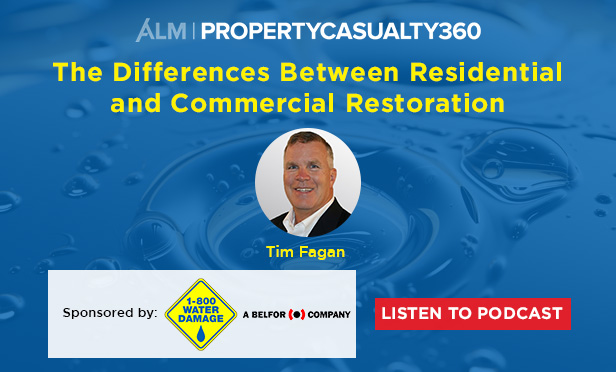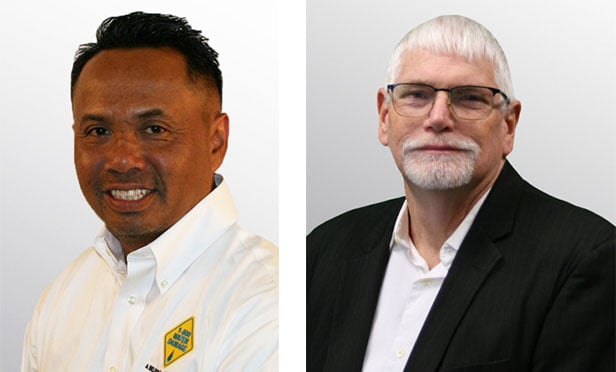The claims restoration process has many variables, each playing a role in how quickly and cost-effectively a claim is resolved. Every moment a claim remains open brings the risk of customer dissatisfaction and frustration.
"Commercial and residential claims have some similarities because, in many cases, you're dealing with water, smoke, wind, or other damages," says Tim Fagan, brand president at 1-800 WATER DAMAGE. "But there are also some differences due to how an insurance company looks at a loss, and coverage differences between the two policy types."
 Tim Fagan, brand president at 1-800 WATER DAMAGE
Tim Fagan, brand president at 1-800 WATER DAMAGE Understanding how policy differences impact the claims restoration process can help create a more successful path to faster claims closures and improve policyholder experiences.
Recommended For You
Urgency of claims and variable scopes
The scope for residential and commercial restoration claims differs for many reasons, including cost calculation. Residential restorations typically involve unit factors such as square footage, cubic feet, or linear feet. However, commercial restorations' initial scope is often less defined and based on materials and time billed. While these scopes are different, so are the urgency and approach.
"Many insurance policies have business interruption clauses, with the promise of paying a percent of average daily cash receipts from a business until they're up and running again," says Fagan. "Every day that a business is closed adds to the expense of a claim."
Business closure also creates potential policyholder risk. Research found that nearly half (43%) of small businesses impacted by disaster never reopen after the event, and 29% are out of business within two years, making it critical to reopen quickly.
Fagan is quick to point out this doesn't mean that residential restorations aren't urgent, but the approach and plan differ from those of a commercial project.
Mitigating risk and creating a plan
Reducing risk and expense around business disruption requires an aggressive plan for restoration, and Fagan notes he's seen many creative strategies. Teams often work around-the-clock to quickly bring insureds back to pre-loss condition.
"Sometimes we're working through the weekends, or even 24 hours a day, to get a business up and running again," says Fagan.
Working quickly is important, but communication and transparency also remain critical to preventing policyholder frustrations. Indeed, transparency remains a key factor in policyholder retention. Technological advancements have helped on this front, even tapping artificial intelligence to help with faster estimates. Fagan expects these improvements to continue.
"We know the longer a claim sits open, the more expensive it becomes," says Fagan. "Technologies being implemented now and in the future are going to support closing these claims faster for both commercial and residential restoration."
For more insights from the 1-800 WATER DAMAGE team of experts, click here.
To learn more about the insurance adjuster training programs offered by the experts at BELFOR Franchise Group, click here
For more insights on water damage claims or for more information on their Claim's Partnership Training.
© 2025 ALM Global, LLC, All Rights Reserved. Request academic re-use from www.copyright.com. All other uses, submit a request to [email protected]. For more information visit Asset & Logo Licensing.








